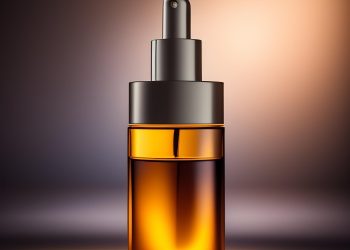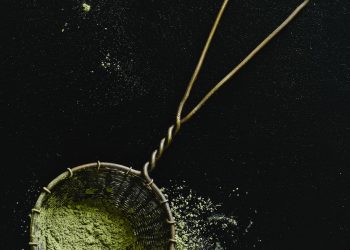Contrary to popular belief, migraine and headache are not the same things.
A headache is just one of the many symptoms of a migraine, a common neurological problem that affects 20 percent of females and 6 percent of males worldwide [1, 2].
Other symptoms include vomiting, nausea, and aura period, a disturbance in vision, speech and other senses [2].
According to Mayo Clinic, it can be caused by changes in the pain pathways in the brain, an imbalance in hormones, or a drop in serotonin levels.
To get relief from a migraine, here are some scientifically proven remedies that might help you.
Natural Remedies to Get Rid of a Migraine
1. Lavender Oil
The oil to run when the tough gets going is lavender.
Lavender is capable of soothing the senses and inducing relaxation even in the most stressful of situations.
Plus, it can help tone down pain in cases of a migraine.
A clinical trial conducted in 2012 reports that inhalation of lavender oil can significantly reduce the severity of a headache caused by a migraine [3].
Included in the study are 47 patients diagnosed with a migraine headache [3].
The participants were divided into two groups, the first of which was made to inhale lavender oil for 15 minutes while the other was instructed to smell paraffin also for 15 minutes [3].
Symptoms were assessed after two hours, and it was found that lavender was able to reduce headache attacks from 129 to 92, whereas in the paraffin group, only 32 out of the 68 attacks responded to the placebo [3].
Results from another study done by Iranian researchers reveal that using lavender oil for three months trimmed down the frequency of migraine attacks, suggesting its use as a preventive measure for this condition [4].
It is also well-established that this oil can tone down other migraine symptoms such as nausea and vomiting [5, 6].
Of the 60 patients with cancer undergoing chemotherapy, those who received aromatherapy treatment with lavender oil were observed to have fewer episodes of vomiting and nausea over a 24-hour period [6].
What You’ll Need:
- 5 drops of lavender oil
- 1 pot of water
Recommended Directions:
- Boil water in a pot.
- Add lavender oil.
- Remove pot from heat.
- Inhale the steam for 15 minutes
- Repeat several times a day.
Also Read: 11 Health Benefits of Lavender Oil That You Should Know
2. Ginger
A popular herbal remedy in Ayurvedic medicine, ginger has long been used for neurological problems such as a migraine, thanks to its prophylactic and abortive effects [7].
Several studies show that ginger works as an effective treatment for a migraine, reducing pain and other symptoms dramatically [8, 9, 10].
In one of these studies, researchers evaluated the effects of ginger and feverfew combination in 60 patients with recorded 221 attacks of a migraine with and without aura [8].
These patients, who typically experienced two to six episodes of a migraine every month, were instructed to take either the ginger and feverfew concoction or a placebo [8].
After two hours, 63 percent of the ginger and feverfew users reported great relief while only 39 percent of the placebo takers felt better [8].
Most patients did not experience any side effects with the use of ginger and feverfew, except for a few who reported of nausea and oral numbness [8].
In a 2014 study, scientists from Iran enrolled 100 patients who suffer from an acute migraine without aura [10].
They were given either ginger powder or pain medication sumatriptan for migraine relief [10].
Although the two methods were similar in efficacy, ginger was safer as it caused significantly fewer side effects [10].
What You’ll Need:
- 1 teaspoon of ginger, grated
- 1/2 teaspoon of feverfew herbs
- 1 1/2 cups of water
Recommended Directions:
- Boil water in a pot.
- Add ginger.
- Lower the heat and simmer for 20 minutes.
- Remove from the stove.
- Add feverfew.
- Cover, and let it steep for 10 minutes.
- Take this tea once a day whenever you feel pain.
Also Read: How To Use Ginger For Acne: 19 Effective Ways With Directions
3. Feverfew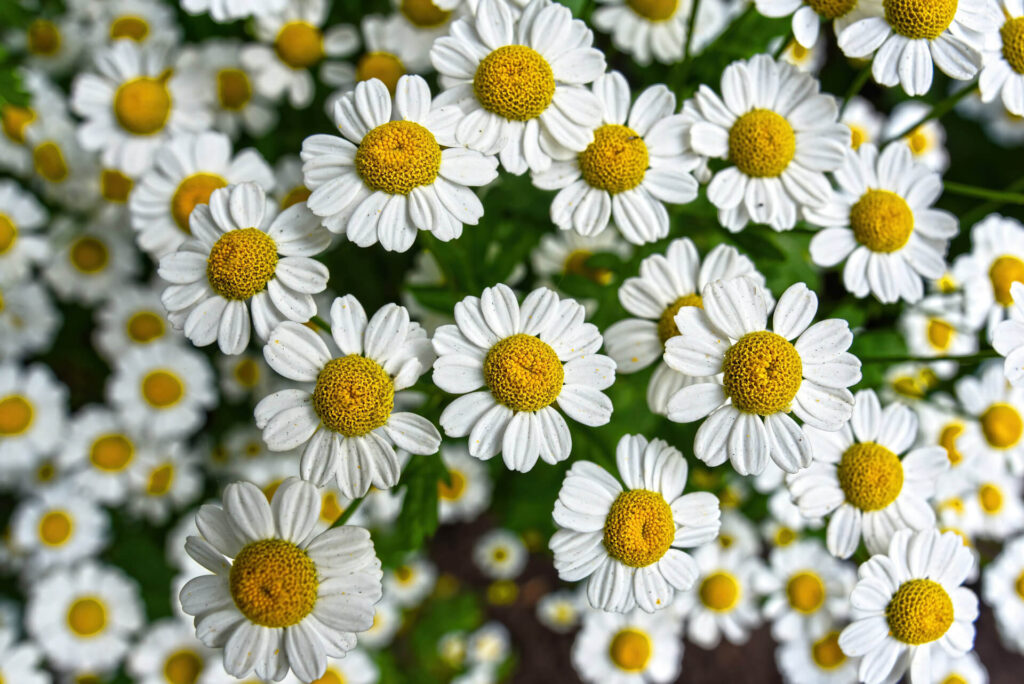
Feverfew sounds like a good remedy for fever.
It’s also actually great for pain-related conditions such as a migraine.
In fact, many studies have demonstrated feverfew’s efficacy in preventing migraine attacks [10, 11, 12, 13, 14].
In one that was published in the Cephalalgia Journal, it was found that most users who take feverfew remedy experienced a reduction in headache pain during migraine attacks, indicating its superior effects to placebo [10].
In another clinical trial, 17 patients who were made to consume fresh feverfew leaves every day as a preventive measure for a migraine were divided into two groups [12].
The first group took capsules that contained dried feverfew powder and the second group took a placebo [12].
Placebo takers reported a surge in the incidence of migraine attacks [12].
They had more frequent and more severe symptoms of a headache, vomiting, and nausea [12].
The ones who took feverfew capsules remained pain-free [12].
Similar results were derived from a 1997 experiment in which researchers conducted a four-month-long clinical trial, requiring 57 migraine sufferers to take feverfew and a placebo [14].
Findings indicate that those who received feverfew had less pain and fewer episodes of nausea, vomiting and light sensitivity than those in the placebo group [14].
What You’ll Need:
- 1 teaspoon of feverfew leaves
- 1 teaspoon of dried peppermint leaves
- 1 cup of water
Recommended Directions:
- Boil water in a pot.
- Remove from heat.
- Steep leaves in hot water for half an hour.
- Strain the mixture
- Drink the tea several times a day until you feel better.
4. Butterbur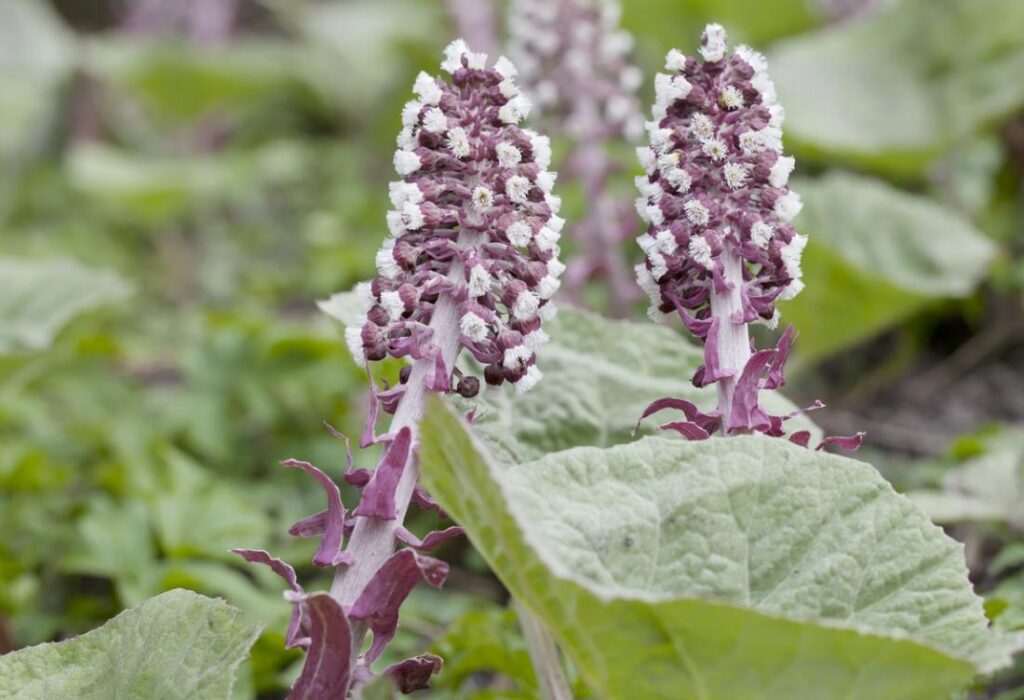
A plant native to Europe, butterbur has been used since the ancient times for its analgesic and spasmolytic properties [15].
Its most popular use is for the prevention and treatment of a migraine, which has been proven in many scientific studies [16, 17, 18, 19, 20].
Researchers from New York conducted a randomized trial involving 245 migraine sufferers [16].
These participants were instructed to take 75 mg of butterbur extract, 50 mg of butterbur extract, or a placebo [16].
The outcome was a remarkable reduction in migraine attacks among the users of butterbur [16].
Not only is it more effective than the placebo, it is also well-tolerated and did not cause any unpleasant side effects [16].
Another study dated 2005 shows that butterbur does not only work for adults but also for teenagers and children [17].
A total of 108 children and teens from six to 17 years old participated in the study [17].
They have been diagnosed with a migraine for at least a year and were given 50 to 150 mg of butterbur extract for four months [17].
Amazingly, 77 percent of the patients reported dramatic improvement in their condition [17].
And there were very few reports of undesirable effects [17].
One study notes that butterbur remedy works even more effectively when combined with music therapy [20].
What You’ll Need:
- 1 teaspoon of butterbur leaves
- 1 cup of water
Recommended Directions:
- In a pot, bring water to a boil.
- Add butterbur leaves.
- Remove from heat.
- Strain the leaves.
- Drink the tea three times a day for one week.
5. Water
Everyone knows that water is important for one’s health, but did you know that it also has something to do with a migraine?
Water deprivation has been pointed as one of the triggers of migraine headaches [21, 22, 23].
In 2005, a group of researchers from the UK found that many of those who suffer from migraine attacks were taking insufficient water every day [22].
Surprisingly, most of these migraine sufferers are aware that dehydration may possibly be provoking their migraine attacks [22].
Although more studies should be done to establish the link between the two, it is obvious that increasing fluid intake is a practical move, as it may possibly help reduce a migraine, and at the same time, maintain optimal health.
What You’ll Need:
- 1 glass of water
- Lemon or cucumber slices
Recommended Directions:
- Add lemon or cucumber slices to a glass of water.
- Chill flavored water for a few minutes.
- Drink the flavored water.
- Repeat this at least eight times each day.
6. Magnesium
Magnesium is an important mineral needed by the body to maintain various bodily processes.
Deficiency in this mineral has been linked to numerous health problems including migraine attacks [24].
Daily intake of magnesium supplements has been found effective in reducing the frequency and severity of a migraine, reports a 1996 German study [25].
In this study, 81 patients who suffer from at least three episodes of a migraine per month were made to take either 600 mg of magnesium every day for 12 weeks or a placebo [25].
It was noted that the frequency of attack dropped by more than 40 percent in the magnesium group while only 15.8 percent in the placebo group [25].
Magnesium also appeared to decrease the duration and intensity of the migraine symptoms particularly the headache [25].
Take note though that some patients reported of diarrhea and gastric irritation after using magnesium supplements [25].
Another study conducted by a different team of German scientists yielded similar positive results, reporting of a 50 percent reduction in migraine symptoms including a headache [26].
These patients with two to six episodes of a migraine without aura per month were made to take either magnesium supplement of placebo [26].
Greater relief was experienced by those who took in the magnesium supplements, but as with the other study, there were also a few side effects such as soft stool and tummy ache [26].
What You’ll Need:
- Magnesium supplements
Recommended Directions:
- Take magnesium supplements daily (400 mg per day for men, 300 mg for women).
7. Peppermint
Many love peppermint tea not only for its flavor and aroma but also for its wide range of health benefits [27].
A study that can be found in the Libyan Journal of Medicine reports that peppermint tea has strong analgesic and antinociceptive actions that are useful for those suffering from a migraine [28].
These properties can help provide relief from the pain and discomfort caused by a migraine.
Topical application of peppermint oil, meanwhile, can reduce pain, nausea, vomiting and light sensitivity, thanks to its main compound called menthol [29, 30].
This was proven in a study published in the International Journal of Clinical Practice, which involved 35 patients with 118 migraine attacks [29].
Those who were given a menthol solution reported of significant alleviation of nausea, vomiting, and sensitivity to light and noise [29].
The use of this solution, fortunately, did not produce any harmful effects [29].
What You’ll Need:
- 1 cup of water
- 1 teaspoon of dried peppermint leaves
- 1 teaspoon of honey
- 5 drops of peppermint oil
- 1 teaspoon of olive oil
Recommended Directions:
- Boil water in a pot.
- Add peppermint leaves.
- Simmer for 10 minutes.
- Remove from heat.
- Strain the leaves.
- Add honey.
- Drink once or twice a day whenever you feel pain.
- Also, you can massage your head with a mixture of olive oil and peppermint oil.
Also Read: 12 Uses and Health Benefits of Peppermint Oil
8. Massage
Touch therapy has always been believed to alleviate pain and anxiety.
For those suffering from migraines, massage can help improve the condition and reduce the symptoms, as proven in various studies [31, 32, 33, 34].
In a clinical trial conducted at the University of Miami, 26 people with migraine headaches were either given two sessions of massage therapy per week for five straight weeks or were asked to wait [32].
After the treatment period, the massage therapy recipients experienced less pain, fewer headaches, better sleep, and lower stress levels [32].
It was also found that they had higher levels of serotonin, which indicates better mood [32].
What You’ll Need:
- 5 drops of lavender oil
- 1 teaspoon of almond oil
Recommended Directions:
- Mix lavender and almond oils.
- Massage temple with fingers using circular motions.
- Gently press the pressure points such as the skull base, the middle part between the eyebrows and corners of your eyes.
- Repeat whenever there is a pain.
9. Caffeine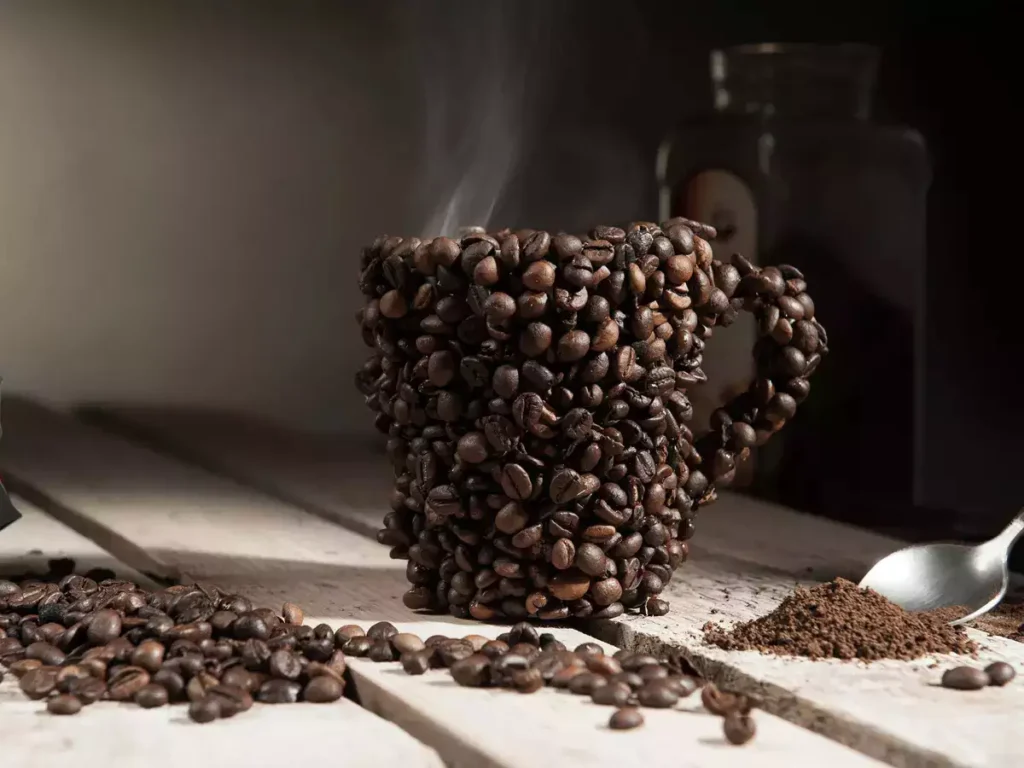
Here’s another good reason to drink coffee in the morning: migraine relief.
Research suggests that caffeine in coffee can help reduce the symptoms of a migraine including a headache, nausea, sensitivity to light and noise, and functional disability [33].
An added bonus is that coffee is also rich in antioxidants that can help keep your immune system working optimally [34].
Just make sure that you don’t drink too much coffee per day as the remedy might backfire, and you might experience more migraine pain.
A cup is more than enough to give you the relief and comfort you’re looking for.
What You’ll Need:
- 1 cup of coffee
Recommended Directions:
- Drink one cup of coffee a day for one week.
10. Fish Oil
Omega 3 fatty acids in fish oil have been known to possess many beneficial effects for the health, including preventing cancer and heart disease [35].
In a study that can be found in the Journal of Adolescent Health, 27 participants who have recurrent migraine attacks, took fish oil supplements for two months, stopped for one month, and then took placebo for another two months [36].
Results show that 70 to 80 percent of the participants had fewer, shorter and less painful headaches after taking fish oil supplements [36].
A headache returned after the wash-out period, and after taking the placebo [36].
Almost all of the participants said that they would recommend fish oil supplements to their friends and relatives who also suffer from the same problem [36].
Another clinical report suggests that this may be due to the antivasospastic and platelet-stabilizing actions of fish oil [37].
What You’ll Need:
- Fish oil rich foods such as salmon
Recommended Directions:
- Consume food sources that are rich in omega 3 fatty acids.
11. Ice
It was in 1849 when cold therapy was first introduced as a treatment for a headache [38].
Since then, it has become a go-to solution for many types of pain.
Researchers who tested the efficacy of cold therapy for migraine patients discovered that it works by disrupting the transmission of pain signals in the brain [38].
It is, therefore, a practical remedy for a headache caused by a migraine.
Since it is very simple to put together, and almost always readily available, you won’t have a hard time using this natural approach.
What You’ll Need:
- Ice cubes
Recommended Directions:
- Wrap ice cubes in a towel.
- Press gently on the temples of your head for several minutes each day.
- Repeat as necessary.
Some Q&A About Migraines:
Q. How impactful can migraine headaches be?
A. Migraine headaches disable a person to function normally and properly. In fact, it occurs due to problems with the nerve and blood vessels in the head. A typical migraine headache lasts from four to even seventy-two hours! So, imagine how disabling it can be for you!
Q. What are the types of migraine headaches?
A. There are a few types of migraine headaches. They are:
- A migraine without aura (also called the common migraine)- this is the most common type of migraine headaches
- A migraine with aura (also called the classic migraine)- this type of a migraine starts with a visual disturbance, then the headache starts
- Status migrainosus – this type of a migraine is a long-lasting migraine that does not go away on its own
Q. What are the common symptoms of a migraine?
A. Common symptoms of a migraine include:
- A throbbing or pulsating pain
- Extreme sensitivity to light
- Extreme sensitivity to sound
- Nausea
- Pain on one side of the head
- Vision changes or blurry vision
- Aura
- Vomiting and nausea
- Sensitivity to smell
- A stiff neck
- Dizziness
- Weakness
Q. How can stress impact migraine headaches?
A. Stress is a very big issue for those who suffer from a migraine. It is because stress is very difficult to control for them along with the migraine. Stress can impact migraines in a number of ways:
- any major stressful event, like someone’s death, can cause the first migraine attack in a person
- everyday stressful events like a traffic jam, a workload can induce migraine attacks
Q. What is silent migraine?
A. Silent migraine is when a person suffers from migraine symptoms minus the headache.
Q. What are the symptoms of silent migraine?
A. Silent migraine has some common symptoms, these include:
- A disturbance in speech
- Migraine aura or changes in vision
- Seeing flashes or flickering lights
- Seeing zigzag lines or waves, also called fortification illusions
- Seeing spots, stars, halos, circles, lines, shimmering, other shapes or colors
- Blurry vision
- Loss of vision
- Cloudy vision
- Other visual disturbances
- Seeing three-dimensional effects
- Seeing dark areas
- A migraine sensory aura symptoms such as tingling sensation or numbness
- Feeling pins and needles all over the head and body
- Odd sensations in a body part
- Clumsiness or weakness in the limbs
- Vertigo
Other additional symptoms of silent migraines include:
- Amnesia
- Confusion in thought and perception
- Frequent changes in mood
- A loss in hearing
- Vomiting and Nausea
- Abdominal pain
Q. Is migraine headaches common across family members?
A. Yes. It is true. A research in the USA has shown that seventy percent of migraine sufferers have a family history of migraines. That is to say, if someone in the family has migraine then another person is highly likely to get it too. Also, if parents are migraine patients, then their children are highly likely to have migraine too.
Q. How do I tell the difference between symptoms of migraine and symptoms of stroke?
A. The main difference between the symptoms of stroke and migraine is that when there is a migraine attack you will see visual disturbances that are moving. On the other hand, for those having a stroke, the visual disturbances will be still. Plus, migraine visual aura symptoms gradually come, unlike stroke visual symptoms.
Bottom Line
A migraine is like a curse with which you will have to live for the rest of your life. However, getting relief from this curse is the way to choose.
Get immediate relief from migraine headache and its unpleasant symptoms by using enumerated home remedies.
Make them from simple and easy-to-find ingredients and you will be fine in no time.
Then again, if you have persistent headaches, then do consult a doctor to see if there is any other medical problem you are having or not!
Read Next: 10+ Effective Essential Oils for Migraine



